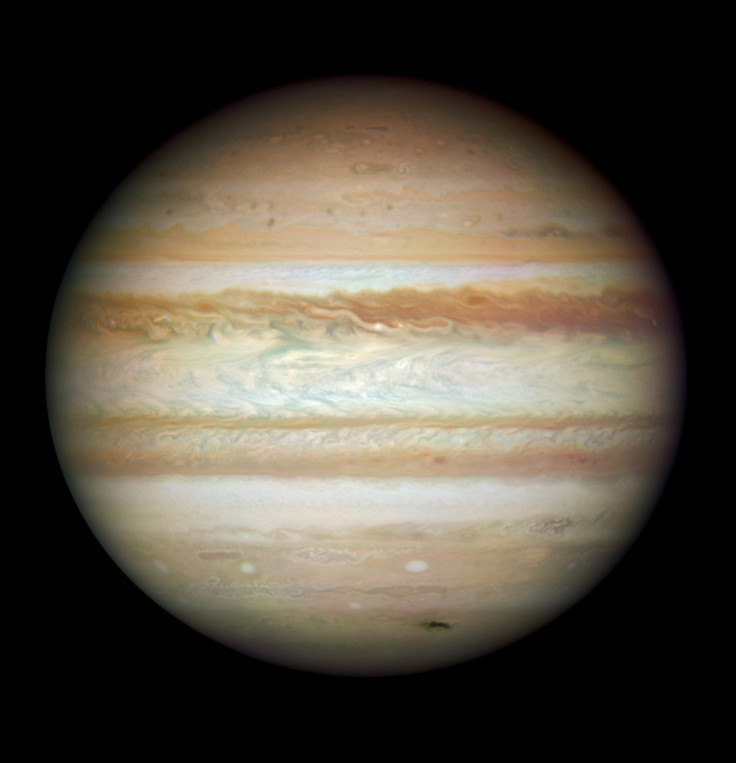NASA Captures Stunning Images Of Massive Spiraling Storm In Jupiter [PHOTOS]

NASA has released images of a massive, spiraling storm in Jupiter taken by the Juno spacecraft during a December flyby.
On its official Twitter account, NASA shared an animation of a giant storm in the southern hemisphere of Jupiter. Called Oval BA, the storm is about 5,000 miles (8,000 kilometers) wide and rotates at a counterclockwise motion similar to the Great Red Spot, which can also be seen at the top part of the images.
What’s the biggest storm you’ve ever been in? 🤔A giant storm is swirling in Jupiter’s southern hemisphere. Seen in this animation of @NASAJuno images, the storm spans 5,000 miles across. 🌩️Take a flyby: https://t.co/vxb4IGfyAU pic.twitter.com/ArkNmsOgmd
— NASA (@NASA) February 2, 2019
According to NASA's website, the Juno spacecraft captured nine photos, which were used to create the animation, on Dec. 21 from a distance between 15,400 miles (24,800 kilometers) and 60,700 miles (97,700 kilometers) above Jupiter's cloud tops. The images were taken between 9:24 a.m. PST (12:24 p.m. EST) and 10:07 a.m. PST (1:07 p.m. EST).
Using data from the JunoCam imager, Gerald Eichstädt and Seán Doran created the movie sequence showing the rotation of the Oval BA.
You can check out the raw images of the massive Jupiter storm here.
Earlier this year, NASA also released images of the gas giant's Great Red Spot and Oval BA, which scientists believe may have grown to its current size due to three smaller storms colliding and merging in the year 2000. It may eventually grow to be as large as the Great Red Spot, which is currently twice as wide as the Oval BA, as the former is believed to have formed from the same process centuries ago.
This color-enhanced photo of Jupiter's two massive storms was also taken on Dec. 21 and is actually made of three separate images, according to the Juno mission website. The images were captured between 9:32 a.m. PST (12:32 p.m. EST) and 9:42 a.m. PST (12:42 p.m. EST) when the Juno spacecraft was between 23,800 miles (38,300 kilometers) to 34,500 miles (55,500 kilometers) from the gas giant's cloud tops in the southern hemisphere.
The image received many positive comments when it was shared via NASA's official Twitter.
"One of my favorite objects to look at in a telescope. Always wonderful to see it with such detail," one Twitter user wrote.
"I’m slightly obsessed by Jupiter’s glorious visual beauty," another netizen said.
"Incredible pictures. It amazes me how #nasa and your gifted people produced the tech to take these pics!" one social media user commented.
© Copyright IBTimes 2025. All rights reserved.





















